U.S. Dangerous Troika? – Physician, Pharma, and Hospital

Are you in Healthcare? Nurse, Doctor, Pharmacist, or Hospital worker? You will want to hear about my childhood medical emergency, industry and governmental views. If you are a Biotechnology & Patent Lawyer or in the Tobacco Industry, read my ideas and insights from those in these fields.
“Scars remind us that the past was real” – Shakespeare
I’ve hesitated to write about this painful childhood event. No sooner do I put it aside, I hear of more and more reports of how the health care industry has failed the public. What makes this topic doubly difficult is that I have family, friends and colleagues who are in the industry. They themselves are also troubled by what’s transpired.
As I mentioned before, I took a lot of risks as a child. Naturally, I scrapped my knees and elbows climbing trees, fences, riding skateboards and racing bikes. But nothing had prepared me for the night when I became dangerously sick after having dinner out with my family.
I was about seven on the night it happened; a long night of pain. Finally, my parents took me to the hospital. I don’t remember us driving there. What I do remember was being on top of a bed of some kind with several people dressed in white over me.
Next thing I remember was waking up in a hospital bed and my parents and grandmother at my side. My granny had bought me some books to read. I was in and out of consciousness, but there are two moments I vividly remember.
A man in a suit coming into my room accompanied by a nurse. None of this fazed me until he said, “This won’t hurt,” and ordered the nurse to hold my arms back. Naturally, given his words, I became instantly scared trying to free myself as I felt something bad was about to happen.
He pulled aside my gown preparing to remove the gauze from the lesion area of the right side of my stomach. But it was not until he pulled out a white string shaped filling that I tried to pull free my arms. Feeling weak, I must have fainted because I don’t remember what happened next.

Another moment I recall was waking up alone needing to use the restroom. I remember my grandmother advising me that if she or my parents were not present, I was to press the button on an attachment by my bed to call the nurse for help. But given my last experience of the nurse holding my arms back, I decided to go at it alone.
I managed to pull myself out of the bed. As I began to walk away, I felt weighted down by one of my arms. It was being held back by the drip. No problem. I pulled it and dragged it with me to the restroom. A few moments later, I heard a women scream, the nurse. She rushed in looking for me. Of course, the lady in white told my parents.
I later learned that what happened to me was a routine surgery, appendectomy. The only difference is that my appendix reportedly ruptured and so I had an open appendectomy. From what my parents tell me, the doctor was surprised I came out of it alive.
It wasn’t until about three years later when I heard that my neighbor’s young daughter had had her appendix removed. Of course, when I found out her mother was a nurse, my stomach ached. However, she turned out to be one of kindest persons I’ve known.
I will never forget the look on the mother’s face after I showed her my scar; a seemingly powerless and deep outrage lay behind it. I didn’t understand it then but through the years I’ve come to recognize that gaze in people who have wanted to help me but were defenseless to do so.
She was not responsible for the scar and could do nothing to change what happened to me. But thanks to her, I was fortunate to have had some of the most amazing childhood and teenage experiences; she was that older sister I never had.
In time, having befriended my neighbor’s daughter, we’d show each other our “war wounds.” Her scar was smaller, about 5 centimeters. Mine was not only closer to 15 centimeters but had additional smaller stiches to the right and left of the larger one with some at the ends, resembling a scorpion.
As a kid, I naturally prided myself in having a larger scar. That is, until I started wearing a bathing suit. Suddenly, my “war wound” did not look so hot. Oooh, but I did, in that red two piece bikini. I admit, modest I am not.
Navigating the System
No longer a child, I find as an adult that navigating through what I see as the “Sick Care System” can literally be a matter of life or death. As one administration after another debates the subject, millions of Americans are left struggling to survive economically facing bankruptcy or death.
Let’s face it; to various degrees, some of us will have to endure pain of injury, disease, or both. And if that was not bad enough, navigating the so called health care system “adds insult to injury” by treating human beings as just another health statistic.
The triad of doctors, pharma, and hospitals are responsible for lifesaving procedures providing care and medicine. Responsibility is precisely the word to define their duty; a duty they chose and are compensated for, fairly or not. But for those who run the system, it has become a profitable business. And for a large portion of the public who become ill or require emergency care, it is a costly affair resulting in fear, dependency, financial ruin, or preventable death.
Congressional seats also depend on the financial support of the Healthcare Industry. Can a constituent afford to trust that their representative is looking out for their interests? They may be arguing on the capital floor for a policy that speaks in their favor, but have they already made deals behind closed doors that belie this? Deals to die for?
Let me be clear. My intention here is not to offer medical or legal advice, but to share my experiences and those of others. I present insight from those in these industries; what I learned in my research and speaking with physicians, nurses, hospital staff, and government agencies.
Simply put, since my childhood operation, I have learned to question the industry – Not what it was entrusted to do but what it actually does.
I found the system is greater than the sum of its parts. Given the power each holds – doctors, pharma, and hospitals – I started my inquiry with the gatekeeper, the principal that insures what procedure if any, one is eligible for – Insurance Company.

Insurance Companies: Blueprint for Life, Death, and Bankruptcy?
Insurance companies are the gatekeepers tailoring their coverage around the insured’s age, gender, health record and how much one is looking to insure. For a growing number of people is has become cost prohibitive leaving the public to rely on an employer; assuming of course one is working.
Typically, company plans do not insure all as a whole; insurance is tailored differently across various employee classes within the company (i.e. executive, top-level management, etc.). Depending on the classification one falls under will determine coverage percentage and/or deductible amounts for services and medicine.
Health care service price lists are to a large extent non-existent, limited or non-specific in planned services. Not until services are rendered will one receive a statement of charges and bill. It appears to be like a hidden blueprint in the deep confines of a city planner’s desk drawer. Why is the health insurance system inherently convoluted and non-transparent?

To best answer this question, I thought it best to understand private, public, profit and non-profit as it applies to health. Herein lies what I think is the root of the price disclosure problem.
Dear Reader, have you ever asked a car or life insurance agent if the company is for profit or not? I did, and aside from a few laughs no one knew of a private, public or non-profit car, home or life insurance company. Second, how many car or life insurance companies, like a hospital, are funded by the government via tax dollars?
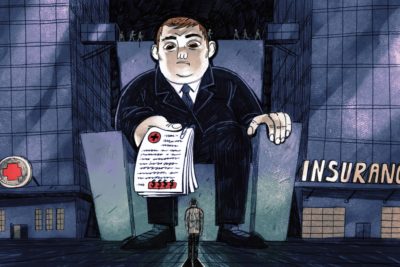
The Sick Care System is not broken, but will it break you?
Tax dollars and government. This brings me to the beginnings of health insurance. The U.S. health system appears to be a century in the making. Accidental or by design?
According to NPR Alex Blumberg “the evolution of the American health care system began in the 1920s, when choices boiled down to which crazy cure you preferred.” It appears that “quacks” and quackery still exist today. The difference I find is that it comes in the guise of some so called reputable insurance companies, doctors, pharma, and hospitals that are “working the system.”
Blumberg’s 2009 article “Accidents Of History Created U.S. Health System” offers relevant viewpoints about the system from some economic historians who “see it as the profound result of historical accidents.” They may be partly correct.
Consider that “When the Great Depression hit, almost every hospital in the country saw its patient load disappear.” The adage of “never let a crisis go to waste” appears to have been with us for some time. Notwithstanding Blumberg’s argument, I find that the health system came about more so by design.
World events no doubt played a role in how coverage was obtained, as the industry key players were fast to capitalize on crises and world events. Sure, the shortage of people due to WWII raised the demand for workers playing a part in healthcare coverage being offered by employers to attract workers.
Inadvertently, this produced a growing number of prospective patients facilitated by the physician. Yet, with “the advent of effective medicines, especially antibiotics, along with a revolution in medical schools” came few if any cures but a soaring health management system. This brings me to politics and the American Medical Association (AMA).

What’s Politics have to do with Health? Everything.
“WITH the Presidential election of 1920, progressivism made its formal surrender to the postwar mood. Lulled by peace and industrial prosperity, Americans during the 1920’s turned their backs on many social and political problems, preoccupying themselves instead with sports, fads, Prohibition, the latest technological novelties, and financial speculation….” – Peter A. Corning
So, what’s politics have to do with Health? President Franklin D. Roosevelt, FDR, may have asked himself that same question. President Donald J. Trump, DJT, may continue to ask the question. In the interim, it appears the people continue to live in the shadows of those in power; those who promise to help while at the same time promise others not to, the special interests.
According to the Presidential Studies Quarterly in JSTOR, Jaap Kooijman of the University of Amsterdam, the Netherlands, 2004 paper, “Soon or Later on: Franklin D. Roosevelt and National Health Insurance, 1933–1945” highlights that “at the Conference on Economic Security in Washington DC on November 14, 1934, President Franklin D. Roosevelt promised reformers that national health insurance would someday be enacted but at the same time reassured opponents by suggesting that no drastic action would be taken.” Politicians and promises, promises, promises.
So who were these opponents? The AMA was reportedly against health bills. Moreover, by the end of reading my report, you may find proposals and practices by the AMA you may not agree with. It appears their influential “brushstrokes” have had a powerful impact in the designing of health care.
The AMA was founded in 1847, about 70 years after the U.S. Declaration of Independence and 14 years before the country’s Civil War; at the cusp between the end of the First and the beginning of the Second Industrial Revolution. According to Corning in “The Evolution of Medicare”, “In mid-January 1939, the National Health Program was transmitted to Congress for study. Then, on January 30, Senator Robert F. Wagner of New York (a close friend of the President) announced that he would, on his own initiative, introduce a bill incorporating the National Health Program.” But, special interest groups fought it.
The AMA, almost a century in the making, had “a group of AMA leaders announced the formation of a “National Physicians’ Committee for the Extension of Medical Service” to lobby against the bill.” Senator Wagner was supported by various organizations but “the AMA, the American Hospital Association, and American Dental Association, among others, testified against it…AMA House of Delegates passed a resolution condemning the bill by an overwhelming majority.” Wagner may have sought help from the President, his “close friend”, had war not interfered.
As Corning notes, “Time had run out, however. On September 1, 1939, Germany invaded Poland and World War II began.
The President soon became preoccupied with the war and with the problem of gearing up the American economy for defense…Without a Presidential push, and in a climate of war mobilization, the Wagner bill died in committee.” Yet, another crisis derailed the impetus for national health.
However, as Jaap Kooijman notes above, “Even though the opposition of the AMA was real, the overestimation of its influence reduces the history of national health insurance to a battle between idealistic reformers and medical obstructionists.” Almost a century later, this bloody battle continues. As some U.S. Presidents’ policies, the National Health Program has had “triumphs and tragedies.”
Fast forward to the present Healthcare System. I find that once you’ve been cleared to enter the system, be prepared for the “bumpy ride” or as the American actress Bette Davis scripted words warned, “Fasten your seatbelts….” Naturally, I find that on this “ride”, it pays to know the system’s gatekeepers: Physician, Pharma, and Hospital.
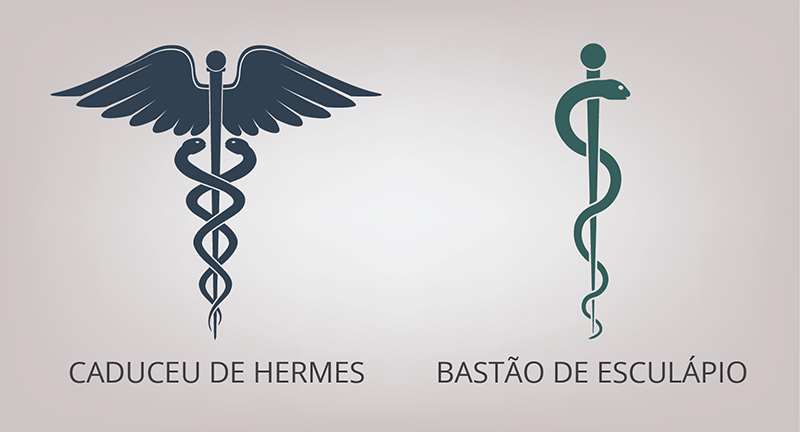
PHYSICIAN – Useful Asset, Useful Idiot or Simply Idiot?
“Today, we face (and may swear by) old and new deities, including one perhaps more powerful and capable of extremes of good and evil than any other: money.” – Hagop Kantarjian, MD, and David P. Steensma, MD
I purposely inserted the image with the correct symbol used in medicine alongside that of the incorrect one. My intent is to show how ideally the snake fits into the current practice of some U.S. doctors.
Dr. Kos aka “Greek Physician Hippocrates of Kos”
According to Drs. Kantarjian and Steensma paper, “Relevance of the Hippocratic Oath in the 21st Century” in the American Society of Clinical Oncology (ASCO) October 2014 issue, the “Oath is an ancient pledge of medical ethical conduct…attributed to the Greek physician Hippocrates of Kos, the most well-known doctor of his era…” However, some have argued that physicians’ unethical conduct may not necessarily be construed as illegal.
Multiple reports appear to demonstrate this. Also, consider that “Many contemporary medical ethicists dismiss the original Hippocratic Oath as antiquated because of enormous scientific, social, economic, and political changes in the intervening centuries.”This being the case, I figured, why not examine the doctor?
Has the doctor passed their physical?
From my close examination, I found it difficult to find BOTH a trusted and competent physician. And so, I continue to question them:
Do they have any complaints filed with the Medical Board? What was their medical school GPA? Did they pass the AMA health exam with questions that include their psychological state of mind? What journal articles do they reference when making diagnosis? Are they pursuing research on patients? Why? Patient care or for $ gains? What are their affiliations with hospitals? Do they get compensated for patient referrals and/or prescriptions? Do they see this as a conflict of interest? If they’re not in private practice, is the organization they’re in accredited by the Joint Commission on Accreditation of Healthcare Organizations (JCAHO)? How do they reconcile seeing dozens of patients a day with giving patients quality time? Does the group or research institute they’re in require them to make needless referrals for specialists, tests and costly hospital exams? Do they have the resources for providing a trained staff and knowledgeable of billing administration? Speaking of bills, are they up to date on their student loans so as not to be motivated by referral “kick-backs”?
I could go on and on but according to JCAHO there are websites that grade the health industry. Yes, doctors also have a file. Maybe, I could request the information from the AMAs Physician Masterfile.
Let’s be fair, doctors are people too. Yes, but with means. Yet, some are feeling the pinch of the system and need to compete to either keep their private practice afloat or resolve to become part of a network of doctors. Otherwise, how are they going to pay for the possibility of hefty medical malpractice insurance or enormous medical student loans? Routine procedures?
In my experience, some primary care physicians have attempted to substantiate patient referrals for exams based on it being routine and standard for one’s gender or age. Yet, rarely do they consider lifestyle, diet, exercise, and family history (even though this information is on the health forms).
The number of medical students pursing internal medicine is reportedly less than that of specialty fields resulting in an increasing demand for primary care physicians. According to St. George’s University Medical School Blog, “We’re already experiencing a shortage of primary care physicians, and it’s projected to grow even larger in the future.” I find this may eventually create a vacuum and problem similar to that of nurses, where the international answer continues to be debated.
In general, physicians seem to have been squeezed out of their profession in the last two decades moving into hospital administration or other industries. I have found countless doctors, between patients, pursuing Masters in Business MBAs – a clear cut manifestation that the industry is a business.
With some doctors going to school and seeing dozens of patients a day, I’ve wondered where they find the time to and resources to update their archaic filing systems into electronic format. Government financial incentives are said to be motivators, but don’t they find the task daunting? Also, with all the data mining to be had, aren’t there risks associated with technologically updating the industry?

Data Breaches? From Hippocrates to HIPPA
“This call may be recorded for quality assurance.” This is a typical message one hears when contacting some businesses. It appears to have also become prevalent when calling some pharmacies and hospitals. Interestingly, when I’ve questioned a representative on their quality of assistance, I point to the call being monitored. They are either ignorant of the recording or immediately ask me if I am recording the call. I imagine the monitoring can work both ways.
With the prevalence of the 1996 Health Insurance Portability and Accountability Act (HIPPA) Public Law which includes the standardization of the “electronic exchange, privacy, and security of health information”, do you ever ask yourself what medical board or associations govern physician forms?
I called several (AMA, State Medical Board…) It appears doctors make these decisions, including the extent of their questionnaire forms. And now, it’s become customary to require forms of identification (State I.D., License, Credit Card, Passports…). Yet, unlike doctors, some hospitals include surveillance.
In fact, other than scanning your identification, some hospitals require signing a particular form, “Conditions of Admission – Outpatient.” It states “The undersigned consents to be photographed (includes video or still photography, in digital or any other format, and any other means of recording or reproducing images) while receiving treatment at the Hospital…for Hospital health operations such as peer review or medical education…” Why now?
I called the particular hospital and a representative in admission clarified that it was to protect themselves legally. When I inquired if the recording was limited to the public space and there were no cameras in the exam rooms, he said he didn’t think so but didn’t know. Yet, he did advise me that if I did not feel comfortable with this I should go to another hospital.
Interestingly, when I called back and spoke with another rep, I asked if I could visit the hospital to view a machine for a medical exam my doctor had suggested. At first, they denied my request. Then, on my pointing out that as a paying customer I should have the right to view the device before paying for such an expensive exam, they reluctantly suggested I speak with a technician as to arranging a time that was best for them. Funny, when scheduling my appointment they had previously suggested a time that was best for me.
Speaking with various people at the State Medical Board, I came away with the same response. Basically, they have no jurisdiction over physician forms or their required modes of collection of identifications. But why now? One respondent informed me that she believes part of the reason was to have doctors assist with mitigating patient abuse of prescription drugs, specifically opioids.
It seems that in a time of data breaches, privacy and security concerns, the general public is once again being forced to put its medical data at risk. To what ends? Apparently, to help government address a problem created ironically by those in the system itself, the troika of Physician, Pharma and Hospital.
The risk of identity theft via medical data bears a strong resemblance to that of other industries. For example, reports of colleges having to pay a ransom for release of information comes to mind. Request for personal information may have been acceptable before industries were induced to go paperless. Now, transferring all data into electronic form is up “in the cloud” and from my view “up for grabs.”
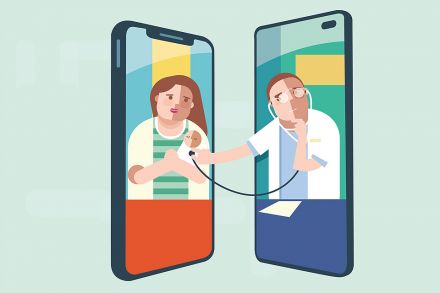
EMR and eHealth
“Human technology has changed dramatically in the past 25 centuries; human nature has not.” – Hagop Kantarjian, MD, and David P. Steensma, MD
Going paperless seems ideal, until physicians discover that unlike their classical and effortless “chicken scratches”, their notations need to be typed clearly and accurately. And while some doctors may be comfortable with technology, their staff may not.
According to an NCBI report earlier this year, “Introduction of the Electronic Medical Record (EMR) and other technological advances… Some seasoned nurses struggle with the technology.” It appears that while physicians may be compensated via government inducements, patients would be the ones to suffer the consequences of tech advances where technical errors would ironically be dubbed “human error.”
How does HIPPA stop HACKERS? Or, deter organizations ready to buy the medical data just as advertisers are said to buy user’s data on social media? Welcome to the world of “telemedicine.” Now, that proponents are taking medicine to the “cloud”, how will one’s health be private?
As I pointed out about social media and tech companies in a previous paper, the problem is consumers’ blind reliance and not taking responsibility to know when you’re legallyobligated to give correct personal information and when you’re not.
Speaking of social AND media, I recall my conversation with the Director of a lab testing facility that changed its location. I not only noticed the computer monitor for patient check in but a change in staff. He explained the he was brought in to address “customer” complaints and that he was charged with having his new staff provide an engaging experience making it more convenient for the “customer.” I reminded him that the people coming in were patients. Right, he said, patients I want to make certain have a wonderful experience.
I looked around the reception room. It was considerably larger than the last one (double the size and double the seats.) Most everyone was quiet either on their smartphone or watching the Tube. It appeared that as soon as a patient’s test was complete, they immediately existed the room.
I found the Tube was an excellent opportunity for marketing. And while some in the room appeared distracted by the health information being provided, there was an opportunity to turn hours of what broadcasters refer to “dead air” into a marketing space.
To be sure, the Tube was not silent or depicting a black image, but I imagine that given the purpose of the visit, for most it might as well be as those looking down on their phone ignored it. I did not. I saw marketing potential.
Sports to Medicine: 5G and the “lab space”?
An idea clicked. With the impetus of 5G and Wi-Fi 6, why not turn the patient reception room into a “lab space” full of customers?
According to Mary Brown, Senior Director, Technology & Spectrum Policy at Cisco “the more power we have in the devices that we’re holding and the more powerful the networks, whether it’s 5G or Wi-Fi 6, the more we’re all going to consume…” She referenced the sports industry, pointing out that one of their “biggest customers is in the stadium space… It just changes the whole experience for the consumer and gets them more engaged in the game.”
The use of 5G in the sports arena seems ideal given America’s sports obsession. I found Brown’s words relevant to other fields like medicine as she spoke of 5G, “not going to be a pain point anymore. It’s going to be a wonderful experience.” Hmm, “wonderful experience”, wasn’t that the lab Director focus? However, referring to my comment above on data and hackers, I also considered Brown’s comment, “we keep track of a lot of data at Cisco.”
Getting Past the “White Wall of Silence”
I have met some doctors who are brilliant scientists and whose work included stem cell research. But, not all doctors are scientists, I soon found out. When was the last time you saw a medical journal in your doctor’s waiting room? If so, how do you know they actually read it?
Testing if the doctor was up to date on the latest medical advances, I’d pose questions relevant to his/her field of expertise. When I came across a doctor I did not trust, I went to another, and another, especially when questionable diagnoses were made.
Second opinion? I figured out two things: Not to let the next physician know I was there for a second opinion and look outside the network. I was quick to realize why it’s called a network; doctors “network” with each other.
Though the original intent of “networking” may have been for the benefit of the patient it undoubtedly appears to be for the protection of the doctors. Yes, the “white wall of silence” is powerful.
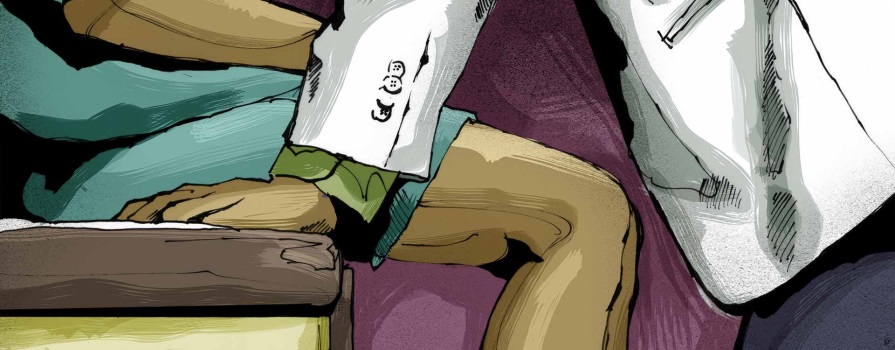
Wolf in Doctor’s Clothing?
The recent sexual allegations made against a physician at a university campus or charges made by U.S. Olympic Champions are sadly not surprising. Consider that children have been reportedly manipulated by members working in their most trusted “safe spaces”: K-12, places of worship, afterschool programs, youth clubs, babysitters, etc. Dear Mom, Dad, Caregiver, Do you trust with your life the person you’ve placed your child with?
Drs. Kantarjian and Steensma note that, “Quacks and charlatans are still with us, only a desperate Google search away, and patients continue to be exploited in a variety of ways. Patients are often highly vulnerable and continue to require protection from the undue influence of a selfish physician.”
Families of victims from criminals “guilty as sin” argue that such continuous accusations sadly cut at the foundation of their beloved institutions. Yes, but isn’t the biggest and most critical of all institutions the home? As adults, we may defend institutions with donations and gifts. But as children, we are defenseless and rely on our parents to protect us from those that manipulate these same institutions.
Teachers and religious leaders are reportedly transferred between schools and places of worship, respectively. However, some doctors are in a “network” all their own. I have found that in the last three decades, few if any have remained in private practice.
Moreover, their working in associations, groups or academia offers them a uniquely powerful alliance. And now with technology easily connecting patient information to their networks, they literally have data at the tips of their gloves. But when I ask them for information about themselves (other than the piece of paper hanging on the wall) I tend to find an uncomfortable answer or silence.
Nowhere is the “white wall of silence” more prominent and prevalent than when a doctor is accused of abusing his or her medical authority and power to sexually abuse their patients, a corrupt wall I have come close to multiple times. I immediately question their purposed methods. Silence freezes the cold exam room with them slithering away. I see their defense analogous to corrupt foreign officials pleading “diplomatic immunity.”
Physician “Diplomatic immunity”? License to Heal or Kill?
Physicians have been empowered with a license to prescribe medications. And some, to overprescribe drugs. Medical malpractice lawsuits have at times been associated with a doctor’s negligence, especially in surgical procedures. However, it appears that today, the focus is on prescription drugs. This is interesting, given that “the money” has been reportedly in surgery (exams-CT Scans, MRI, etc., specialists such as anesthesiologists, radiologists, etc.).
Few, however, in the general public have been able to afford necessary surgeries let alone suggested procedures. This may explain the proliferation of prescribing drugs for pain symptoms instead of addressing the cause through needed surgery. I imagine that when you multiply patients seeking surgery, those wanting “pain killers”, and those already addicted to drugs the numbers add up.
To be fair, a doctor prescribing a drug may not be aware that one or more doctors have already prescribed the same drug. For all the technology we gloat about, it appears the health system is no more feasibly able to monitor patients any more than the ATF Agency monitors gun buyers. And some doctors and gun sellers may reasonably argue that it is not their responsibility to “baby sit” patients and customers. Ironic, is it not, that both the doctor and gun seller, to some degree, hold peoples’ lives in their hands, if only for a moment.
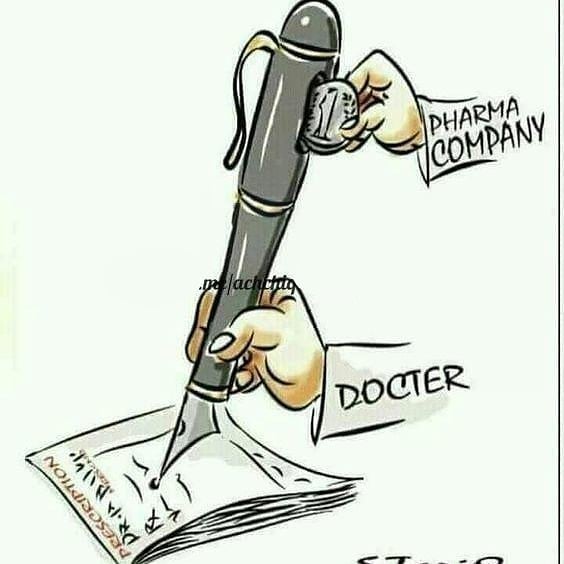
PHARMA – Prescription for Life or Death?
“I think that the health care outcomes and life expectancy, there is a lot of factors that influence it. For example, exercise, diet, lifestyle. And I feel that our nation needs to improve a lot in many of these cases.” – Albert Bourla, CEO Pfizer
Drugs to die for!
According to Steven Joffe, a pediatric oncologist and bioethicist “the practice of medicine does not regulate what doctors prescribe.” Joffe is currently the Founders Professor of Medical Ethics and Health Policy and Professor of Pediatrics at the University of Pennsylvania.
It seems that adding to this bad practice is bad policy. Joffe notes that the “Right to Try Legislation by President Trump will not require disclosure of symptoms as commercials currently do.” Good luck in obtaining full disclosure information from a physician. I have overheard Pharma representatives giving physicians a brief summary of drug symptoms over dinner at restaurants or symposiums.
If the story is correct that “Perdue Pharma put OxyContin on market in 1996”, then the problem stems over two decades. I ask, “Aren’t doctors aware of the consequences of their prescriptions? Aren’t med students taught and warned of this in medical school? Apparently not. Reportedly, two Republicans introduced the Ryan Creed Act requiring opioids training to doctors prescribing it. But the AMA is said to have rejected it.
The AMA reportedly was against doctors obtaining 6-8 hours training on the subject of opioid abuse arguing it infringed on a physician’s time. According to Drs. Kantarjian and Steensma, “the AMA has historically worked against the adoption of universal health care and other policies that could expand access to care but decrease the incomes of practitioners, and criticized professional medical organizations that disagreed with their position.” How does the AMA reconcile said actions with their stated mission? “To Promote the art and science of medicine and the betterment of public health.”
It appears that doctors came under pressure to prescribe. Yet, some doctors have argued that you can learn to live and manage pain. Pharma, it seems, saw a larger market. Regulators, mistakenly, separated drug use from drug abuse. Deadly mistake. The last two decades have demonstrated that they are not exclusive.
Pharma, like other industries, is simply a business, is it not? A business providing health and life-saving products for people, but nonetheless a business. I find the argument of the “Drug industries writing manuals for hospitals” no different than the tobacco industry reportedly giving grants to some research academicians so that their papers paint the industry in a good light. Yet, the tobacco industry is said to “maximize profits without any public benefit.”
Unlike pharmaceuticals, tobacco has been a staple in America’s culture for centuries, probably second to firearms. And even though it took centuries for critics to have legislature impose the Surgeon General’s Warning on products, it continues to be sold and bought.
According to the Centers for Disease Control and Prevention (CDC), “In 1981 the FTC issued a report to Congress that concluded health warning labels had little effect on public knowledge and attitudes about smoking.” Why? Addiction is the answer given by some of the science research. And like obtaining prescription medicines, purchasing tobacco products is a legal transaction. Of course, marketing has played a major role.
How Does One Defeat an “Unnecessary Evil”?
Working with attorneys in the fields of criminal, civil, and anti-trust law, I understood legal challenges. Yet, when California Lawyer magazine published its 1998 article, “The Last Days of Joe Camel”, some of us in the legal field felt a sense of atonement for the thousands if not millions of lives lost. The verdict, I thought, was “the straw that broke the camel’s back.”
Nina Siegal, thearticle’s author explains “How a team of lawyers defeated big tobacco.” It all started with Janet C. Mangini. According to Mangini, “It bothered me that little kids recognized Joe Camel the same way I recognized Mickey Mouse when I was a kid.” Mangini’s astute observation pointed to the power of marketing.
In the 1991 case, “Mangini v R. J. Reynolds Tobacco Co., the plaintiffs argued that the Joe Camel material violated the Federal Cigarette Labeling and Advertising Act because the required warning labels were not printed on the promotional materials. They also argued that the companies were targeting minors.”
Although some firms appeared to have gone “head-on” against tobacco like in the 1992 Cordova v Liggett Group, I found that Mangini went “straight for the jugular.” According to Siegal, “Mangini and others began fashioning a different attack, one that would take away the tobacco industry’s best defense because it didn’t require an injured plaintiff.”
It appears the plaintiffs were successful, “In July 1997… the company agreed to most of terms and prepared to terminate the Joe Camel campaign.” Yes, they “defeated big tobacco.” No longer was “Joe Camel” showing his smiling face in the marketing world. No, but what was to come appears to have proven ever more powerful: social media and influencers marketing E-Cigarettes.
Is tobacco hedging its bets? While traditional tobacco reportedly competes with E-cigarettes, some have invested in these new competitors. “I consider traditional big tobacco companies as a major investor in our company.” – James Monsees, Co-Founder of Juul Labs.
Tobacco and Drugs are said to be heavily regulated. Yet, millions have suffered illnesses or died from both products. Prescription opioids are approved by the U.S. Federal Drug Association (FDA). Yet, reports of some doctors not fully disclosing the drug’s safety or of it being addictive are prevalent.

Drug Pushers?
What about the “drug pushers”? Opioid abuse has given us a glimpse of the business of drugs. I’m not referring to drugs sold on streets where the focus of State, Federal, and local law enforcement has been for decades. It appears that large funding for the “war on drugs” was misdirected. Government missed the mark. Or, did it? Did pharmaceutical lobbyists make sure the aim targeted the vulnerable and economically powerless populations?
Pharma seems to have been ahead of technology. One could make both a compelling and convincing argument that they were the foreseers of the creation of APPS as I note in my paper, “There’s an APP for Health! Capitalizing on the A-Z’s of Marketing Pharmaceuticals.” As I note in the paper, “Are you in pain? There’s a drug for that! Just ask your licensed dealer.” Notice how ads for drugs advise “by prescription only.” Of course, how else will you “legally” obtain drugs.
What of the gatekeepers? Why did insurance companies not question doctors recommending drugs instead of pricey, medical procedures? If appears that insurance companies saw it as a cheap alternative. The CDC reportedly recommends that when given for acute pain, the prescription should be for 3 or 5 days, not the 30 days it’s typically prescribed.
Shorter prescription amounts were reportedly opposed because of the inconvenience for doctors having to re-prescribe. Could it also have meant a loss of profit for Pharma? As a consequence, CDC reports that “From 1999 to 2017, more than 200,000 people died from overdoses related to prescription drugs.” In the end, the victims were “blamed for their own deaths by community and drug companies.” The dead cannot speak but family, friends, advocates, and some in Congress have.
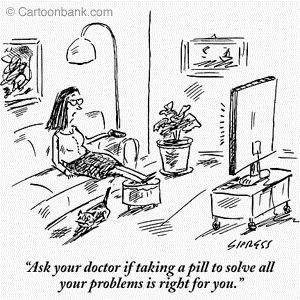
Drug Ads: Only in America?
At the February 2019 U.S. hearing on Prescription Drug Pricing, Chief executive officers from seven prescription drug companies testified before the Senate Finance Committee on drug pricing practices.
Unlike the U.S., most countries outlaw ads. Consider the line of questioning U.S. Sen. Catherine Cortez Masto (D-NV) made at a Prescripti-on Drug Price hearing:
“Apart from New Zealand, nowhere else in the world will you see drug ads on television. The answer that I’ve been given is that you maintain that television ads are a critical public health tool that helps patients identity their symptoms and seek treatment. Would you all agree with that?”
Response: All agree, YES.
Cortez Masto: “So, if you maintain that television ads are a critical public health tool, then how can it be if our health outcomes are not significantly better than in those countries where it is outlawed?”
Albert Bourla, CEO Pfizer: “I think that the health care outcomes and life expectancy, there is a lot of factors that influence it. For example, exercise, diet, lifestyle. And I feel that our nation needs to improve a lot in many of these cases.”
Dear Readers, there you have it; straight from a Pharma executive. Not only do I agree with Mr. Bourla, I found his reply was refreshingly straightforward. There is no “magic pill.”
How did the hearing end? Drug companies being warned “that there was bipartisan support to ensure drug prices were brought down…” and if they failed to address it “Congress or President Trump would take action to force them to do so.” Let’s ask ourselves, how have warnings directed at social media and tech companies worked out?
It appears that you can “tweet” all you want, but will Government “bail” you out of bankruptcy due to medical expenses?

Highly-Priced and Highly-Prized Drugs
At the Prescription Drug Pricing hearing, Pharma executives were asked “Is it true we pay the highest drug prices in the world?” Response? Yes, most all agreed.
Big Pharma admitting that drug prices are higher in the U.S. than in Europe highlights each government’s position in respect to the healthcare of its citizens: Powerless U.S. government. Powerful E.U. governments. By the E.U. having “skin in the game”, they have a vested interest in obtaining low drug prices for their citizens.
From a business perspective, it seems logical for drug companies to attempt “to increase profits by marketing current drugs to enhance to the success of those drugs…on the market.” It is also extremely expensive to market them in the U.S.
American citizens, especially those who pay high prices for pharmaceuticals, have mixed feelings as to Europeans paying little to nothing for their drugs. For some, the reality of their health and financial situation is not sustainable trumping any illusion that capital benefits of capitalism applies to them.
Yet, for others, they’d sooner die defending their capitalist dream rather than be classified a “socialist.” Karl Marx may be cynically smiling, recalling his words, “ideology is the opioid of the people.”
Members of the committee hearing on Prescription Drug Pricing also pointed out that U.S. citizens’ tax dollars go to funding drug company research. It seems ironic to me that Americans not only pay in part for drug research but some pay heavily for prescription drugs. European citizens not only rely on the state for their health care but are said to pay a fraction.
According to Bruce Lehman, President, International Intellectual Property Institute, “in most of the world, governments bear the cost of purchasing inventions that relate directly to sanitation, public health, national defense, public order and security, public transportation and education. For these inventions, the market is primarily a market of governments, not individuals.” Case in point: Europe.
“Parallel Imports”
European have gone outside the E.U. for specialty care as some Americans reportedly go to Canada, Mexico, or India for both care and pharmaceuticals. John R. Thomas paper, “Patents and Prescription Drug Importation” ascertains that “In some circumstances, widely divergent drug prices between the United States and other nations have encouraged parallel importation…create incentives for individuals to purchase medications from abroad, and import them into the United States, in order to lower health care costs…” Thomas refers to this practice as “parallel importation.”
Lehman not disputing the “market exclusivity and higher prices afforded by patents”, seemingly takes a global perspective in his paper “The Pharmaceutical Industry and the Patent System.” However, he argues that “this is not the result of the patent system. It is the result of lack of a source of funding…in the United States Medicaid provides a safety net for those without health insurance or other means to pay for drugs…” Lehman, may be overlooking the inner workings of the economic and health situation of the majority of Americans.
U.S. socio-economic standings categorize a large portion of its people across a spectrum in between those at the extreme end of the poverty level or what I call Medicaidaires, and those at the extreme end of the wealthy level Multi-Millionaires or Billionaires. Moreover, the increasing numbers of homelessness and suicides across the nation dispute this “safety net” Lehman speaks of.
Lehman adds that in “many parts of the world there is no similar source of public financing.” Sir, in “many parts of the world there is no similar” powerful Democracy deriving its capitalist power from the same people it professes to give “unalienable rights.”
As to the “source of public financing”, some countries obtain their funding from U.S. foundations made possible by U.S. Corporations profiting from U.S. consumers and workers. Lastly, the idea of “safety nets” is apparently reserved by communist and similar state run governments the U.S. hypocritically denounces. Yes, Americans have “life and liberty” while they run in their “pursuit of happiness.”
Thomas notes that “In order to take advantage of these price disparities, at least six bills have been introduced in the 114th Congress that would allow individuals to import lower-cost prescription drugs from foreign jurisdictions….None of these bills has been enacted.” Consequently, Americans are getting the “raw end of the deal.”
“The Exhaustion Doctrine”
What of the loss of patent rights after first sale? Thomas notes that the Exhaustion Doctrine or the “first sale rule”, the law determined that a patentee “will not interfere with the full enjoyment of that product.” To Thomas’ point, if I purchase Swiss chocolates and export them abroad to consume, gift or sell, I am within my rights. Some would agree and others not.
Thomas notes that “Two competing positions have arisen with respect to the use of patent rights to block parallel importation. One is that the exhaustion doctrine is not limited to domestic sales by the patentee…commonly referred to as “international exhaustion.”
Not surprisingly, there was pushback from Big Pharma. “The other position, more favorable to patent proprietors, is that the U.S. patent is fully enforceable against imports despite the exhaustion doctrine.” The debate continues to be tossed back and forth between the Federal Circuit and the Supreme Court.
What does this mean for Americans who, like chocolate, may wish to purchase medications? Thomas concludes that “Unless the Supreme Court decides to intervene, the Federal Circuit’s ruling in Lexmark v. Impression Products remains the law of the land…As a result, brand-name drug companies may potentially block imports of patented medications into the United States.”
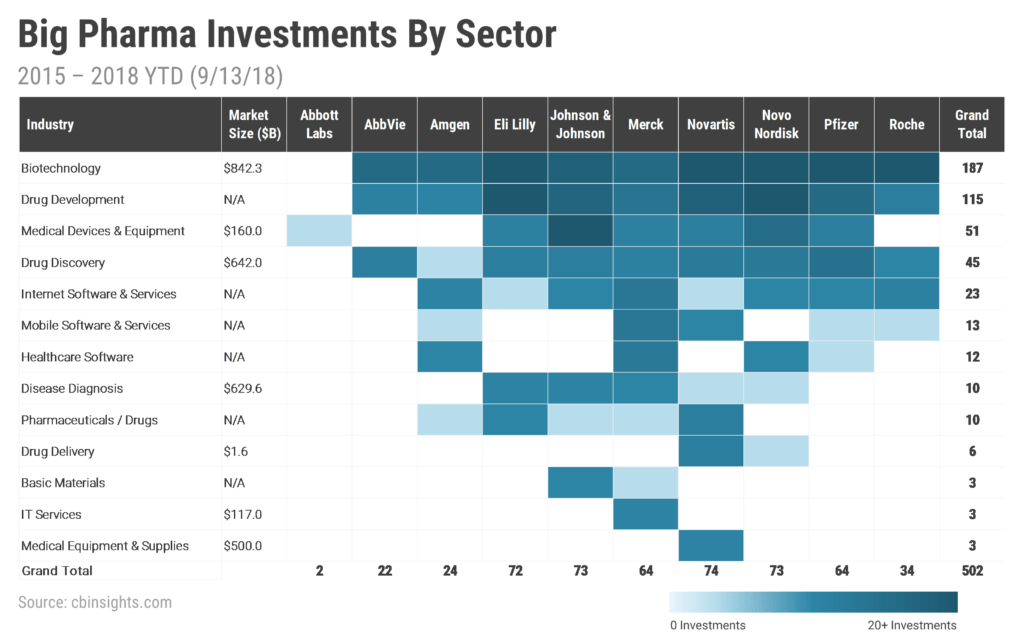
Where Pharma Invests
It appears that Pharma has thrown their “loaded” dice onto the trade table. A risky gamble to be sure, but a gambler who is well financed tends to win. Given the “numerous bilateral “free trade agreements”… the United States is obliged to allow pharmaceutical patent holders to use their intellectual property rights to block parallel imports.” From parallel to vertical, pharma seems to be well versed in hedging its bets.
Technology advancements have seemingly caught the industry’s eye. According to CB Insights, “pharma companies that traditionally focus on drug development are exploring new verticals.” Looking where they put their investment money allows one to gauge what sector(s) they’re looking to be in.
Although these investments range from, “drug development to e-commerce…Unsurprisingly, the biotechnology sector saw the most deal activity, as it is both big pharma’s primary sector of operation as well as the sector with the largest market size.” As the industry has global reach, I imagine its impact differs depending on region and nation.
Future Impact on Europe?
Witnessing Europe’s transformation before and shortly after their creation of the E.U. and implementation of the Euro, I saw it slowly transforming its socio-economic policies. Why was this occurring?
The country’s longstanding cultural norms may not be sustainable due to competitive global economic and geopolitical forces – 2008 economic crisis and the surge of refugees arising from political upheaval in Africa and the Middle East.
Moreover, the laissez-faire policies of yester year are devoid of the power of today’s free-market capitalism. The force of a pendulum swing may likely cause a reshifting redirecting investment into Europe. As investors once gravitated toward the open free plains of the U.S. relishing in a “strong patent protection with a market free of price controls”, Europe, now the E.U. has been forced to follow the U.S. lead.
The days are vanishing “where increasingly onerous price controls have threatened investors’ return on capital.” The time has come to recoup past loses. Put a number you say. Lehman obliges, “in the year 2002, 82% of the investment by global pharmaceutical companies was spent in the United States, versus 18% elsewhere, including Europe.”
Europe’s economic loss? “Since 1990 the patent-driven pharmaceutical industry grew twice as fast as the economy at large.” Pharma has become a powerhouse. Let’s search its corridors and find the source of its power.

The Last Days of Pharma’s Drug Abuse?
Like the successful “Mangini v R. J. Reynolds Tobacco Co, case, are brilliant lawyers “fashioning a different attack”? Will they start with the marketing ads? This seems unlikely as Pharma does not appear to market to children, but adults. And like the American public, corporations have First Amendment rights.
Pharma also has power, a power derived from patents. So, let’s go to the source.

PATENTS: “Silver Bullet”
“…limiting the spread of medical knowledge to only those who have paid for it can lead to disasters (as when the Chamberlen family’s preservation of their “trade secret” of obstetrical forceps for over a century contributed to countless needless deaths in childbirth)…” – Hagop Kantarjian, MD, and David P. Steensma, MD
My first knowledge of the word patent was as a child reading about Albert Einstein. I learned that many years before Einstein was awarded The Nobel Prize in Physics 1921 “he accepted a position as technical assistant in the Swiss Patent Office” according to nobelprize.org. Nowhere did I read that Einstein pursued patents for his “several pioneering works in the field of physics.” Clearly, that was a different time and Einstein a remarkable man.
Patent is defined as “the official legal right to make or sell an invention for a particular number or years.” Naturally, the bearer of a life-saving invention holds remarkable powerful.
In the drug industry, “patents contribute to roughly 80% of the overall revenue of pharmaceutical companies” according to upcounsel.com. Patent holders may see Biotechnology & Pharmaceuticals patents as highly-prized possessions and universities are among those being granted these “awards.”
Patent Docs list the “Top 100 Universities Worldwide Granted U.S. Patents in 2016.” Kevin E. Noonan notes the “The National Academy of Inventors and the Intellectual Property Owners Association report…on the top 100 universities worldwide granted patents in 2016. Overall, universities were granted 6,768 patents…”

Kevin E. Noonan is listed as a partner with McDonnell Boehnen Hulbert & Berghoff LLP and serves as Chair of the firm’s Biotechnology & Pharmaceuticals Practice Group. Noonan is also noted as an experienced biotechnology patent lawyer and founding author of the Patent Docs weblog.
Yes, but if tax dollars are funneled to fund drug research, are the patents not the property of the government, hence the people? No. According to Bruce Lehman, President, International Intellectual Property Institute, “While public funding of the training of scientists and basic research vastly expanded the understanding of human pathology as the century progressed, it was the profit incentive operating through pharmaceutical companies accountable to investor shareholders, which provided desperately needed new therapies to patients.”
It readily appears that while the public is funding research few may see a return on investment given the prevalence of high drug prices. This may explain the reported increase in popularity of generic drugs. Right, but the law and the system is clear on this.
Lehman explains that “the legislation restricts the exclusive right of use which normally accompanies the patent grant by permitting generic competitors to use the product for testing and developing the generic alternative while the patent is still in effect. This permits a generic product to be marketed virtually the moment the patent expires.”
“Straight for the Jugular”
Could patents, the source of a drug’s market power, be the “Holy Grail”? Yes and Yes. Yes, there’s no question that obtaining a patent is a powerful right. Yes, obtaining powerful investors is priceless!
Obtaining patent protection seems to be no easy task as it is “extremely expensive and risky to produce new drugs.” According to upcounsel.com “the cost of bringing a new drug to market is approximately $5 billion and can take near 15 years to get a drug introduced to the market.” As I noted above, a risky gamble to be sure, but a gambler who is well financed tends to win.
However, “The market exclusivity and higher prices made possible by the patent rights function as a reward for the risk undertaken by those who financed the research and development leading to the new technologies, as Lehman notes. Naturally, if the stakes are high so should the rewards.
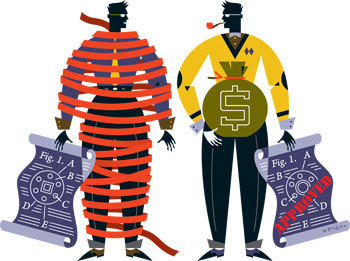
In fact, “Nowhere has the patent incentive been more successful in attracting investment in technology that in the commercial pharmaceutical industry in the United States. A strong patent system – combined with a market without price controls – caused a massive flow of investment into the American industry.” The ROI is clear.
Academia appears to be winning. The list above includes some of the best universities in the U.S. Institutions of learning are said to provide the pharmaceutical industry the best minds in research and clinical trials. In return, they receive grants from pharma.
I imagine that to compete with this arrangement, a private institution would need to be incredibly well endowed. Of course, obtaining donations from a public who stands to gain from financing such institution seems palpable.
Such reasoning started me thinking as to the seeming impracticality of funding institutes, foundations, and others in the search for cures. After decades of donations possibly amounting to billions of dollars from corporations and the public, I have yet to hear of cures for some of the most debilitating or deadly diseases.
It seems to me that some of this funding may best be served to address disease management including the prevention or reduction of the onset of symptoms. In other words, utilizing funding for research, clinical trials, and drug manufacturing to compete with Big Pharma.
As Lehman points out, “the inventions of pharmaceutical researchers have a dimension difficult to quantify in economic terms…” Possibly, though I imagine investors find it painlessly quantifiable. He adds “their impact in extending life and alleviating human suffering.” Yet, nowhere in his paper does he note the word cure,
This raises the question to those “racing” for cures. Where’s the Return of Investment (ROI) for donors? If one considers that in Big Pharma “None of the new drugs in the pipeline…would have come into existence without the patent incentive and the prospect of a return on investment provided by that incentive.” For some, this argument may seem cold and calculating. Yet, for others it is brutally honest.
Why are organizations searching for cures not also investing in patents on medications that extend life or alleviate human suffering? I suspect two reasons: $ and not their business; their smaller organizations simply could not compete with the scale of Big Pharma.
Clearly pharma understands this, but do the donors who continue to pour their money in the hopes of a cure? No doubt people marching and showing support is a healthy, welcoming, and positive act. Some may argue that that in itself is sufficient. Yet, others find financial support is also necessary. Again, you be the judge.
Going straight to the source of a drug’s market power makes sense. I see two opportunities: patent term and originality. Note, “Patent terms are set by statute. Currently, the term of a new patent is 20 years from the date on which the application for the patent was filed in the United States.” But “Many other factors can affect the duration of a patent.” I imagine that thinking creatively one could arrive at these “other factors.”
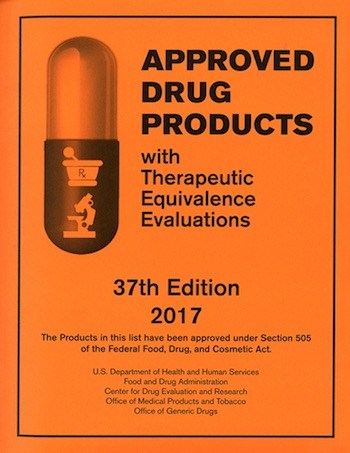
Is Your Drug in the Orange Book?
The FDA lists the Approved Drug Products With Therapeutic Equivalence Evaluations (the List, commonly known as the Orange Book). On Patents and Exclusivity, “Patents are a property right granted by the United States Patent and Trademark Office anytime during the development of a drug…” Consequently, competitors need to be ready with drugs that offer a competitive advantage to those set to expire.
Preparation and timing is critical as “Patents and exclusivities that have expired are removed from the Orange Book.” The FDA notes that “Exclusivity was designed to promote a balance between new drug innovation and greater public access to drugs that result from generic drug competition”? Perhaps, revamping the patent process could even the playing field.
Can the Orange Book be a source to those who hold the public’s interest in mind providing leverage to counter high prices? Protecting patents is vital especially if one considers that “Not all drugs can be patented…” Originality is key. According to upcounsel.com, when applying for patent protection, the invention must meet three criteria: Non-obvious, new, and useful.
Source for ideas? Think “patent for patient.” Except for an added “i”, both words are the same and interlinked. Nurses, doctors, and those who come face to face with patients are key data sources. As medicine is rapidly becoming “telemedicine”, program applications for electronic records are excellent data fields when searching for the new “new, and useful.”

HOSPITAL: License to Treat or Mistreat?
“We face problems that are intensely relevant to modern cancer research and care…new types of medical and cancer research that include human experimentation, interactions with pharmaceutical and insurance companies, different practices and care patterns, unique stress from the cost of care and of drugs, and financial conflicts of interest.” – Hagop Kantarjian, MD, and David P. Steensma, MD
Visited a hospital lately? Once you supply your health insurance card and identification feel free to walk the hospital halls of pain management. Or shall I call it hospitality. Pun intended. Think about it. Hotels are in the business of hospitality, providing a room and customer care. Not surprisingly, hospitals have effectively capitalized on the term derived from their name, hospitality.
Hotels provide room amenities that include T.V., refrigerator/bar, bath toiletries, towels, bathrobe, and room service. Hospitals? You may or may not have your own room, share a T.V., and sleep wearing an inexpensive plain gown, requiring you bring accessories from home.
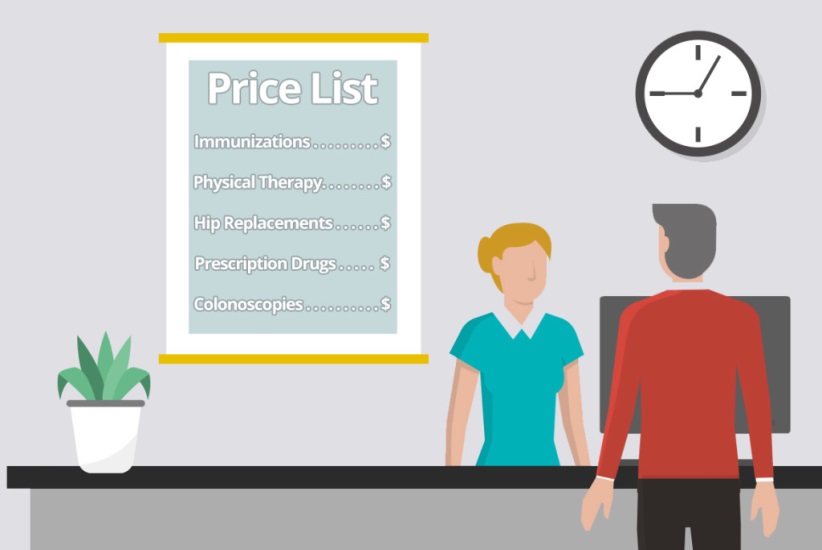
Price Disclosure?
Unlike hotels, hospitals are reticent in providing price disclosure for online price comparison. Like hotels, hospitals provide billing at the end of your stay. But unlike one final bill from hotels, be prepared to receive multiple bills from multiple parties: surgeon, anesthesiologist, radiologist, hospital for medical devices, drugs, room, food, etc.
Referring to one “Conditions of Admission – Outpatient” form, it clearly states, “All physicians and surgeons furnishing services to the patient, including the radiologist, pathologist, emergency department physician, anesthesiologist, hospital, and the like, are independent medical practitioners, and are not employees or agents of the hospital…patients may receive multiple bills.”
As of January 2019, some hospital websites have posted price information but your search may be painfully frustrating as it is not user friendly. Sure, some in the industry have argued that pricing of a procedure is not easily discernible as purchasing a home appliance. My response? If you value your toaster more than your body, I imagine your body is not much to care or look at. Be that the case. Why didn’t these companies list their prices from the beginning making it easily discernible so that the public could make an informed decision? Or was obscurity the point?
Hospital History
It is important to note that “Before the birth of modern medicine, hospitals were poorhouses where the indigent went to die” according to NPR’s Alex Blumberg. It appears that the business of hospitals, like hospitality, grew from not having vacant beds and so it marketed itself to those who did not necessarily need urgent care.
The idea of filling vacant beds brings to mind a ward; hospital ward and prison ward. These two long-standing institutions, hospital and prison, seem to have a lot in common.
Some are public and others private. To varies degrees, each obtains funding from taxpayers. Food, housing, and care is included. Hospitals are apparently adding surveillance and security. Both have visiting hours and their own rules. Lastly, release requires authorization. I think if you ask people what are the two last places on earth you never want to set foot in, these two “wards” may be at the top of the list.
Various factors reportedly account for the increase in prison population (i.e. high crime rates and high bail amounts). Others say policies and laws have systematically worked to promote the growth of the prison industrial complex. Hospitals, though, appear to have been originally designed to attend to those who sought care and medicine. Early on few did.
However, “by the late 1920s, hospitals noticed most of their beds were going empty every night. They wanted to get people who weren’t deathly ill to start coming in. Suddenly, says economic historian Melissa Thomasson, ‘hospitals are marketing themselves as places to have babies.’” Once the rooms were occupied, it was only a matter of time before costs and the idea of insurance would arise.
Service economies like hotels and restaurants are known to increase their rates and prices due in large part to incurring labor and product costs as well as marketing and renovations. Naturally, “Health care became much more effective, and much more expensive. Clean hospitals, educated doctors and real pharmacological research cost money.” The patient, like the hotel customer, ultimately incurs the cost of these necessities.
Luxuries, however, are not necessities but merely value laden by societal perception. Reportedly, “An official at Baylor University Hospital in Dallas noticed that Americans, on average, were spending more on cosmetics than on medical care. “We spend a dollar or so at a time for cosmetics and do not notice the high cost,” he said.” From a business perspective, this observation makes perfect sense, but from the patient, it can be construed as market manipulation. No matter, the idea of being insured was only a matter of time.
It soon became clear to hospitals that “People proved willing to pay for care when they were really sick, but it wasn’t yet common to go for checkups or survivable illnesses.” Hmm, how do we induce people to think they need a product? Vanity continues to be a powerful motivator, but fear is at the top of the list in marketing and propaganda.
Blumberg notes “The Baylor hospital started looking for a way to get regular folks in Dallas to pay for health care the same way they paid for lipstick — a tiny bit each month.” It seems that the hospital was patiently managing how best to approach this as “Hospital officials started small, offering a deal to a group of public school teachers in Dallas.”
Seemingly, the economic times were ripe for execution. However, economies turn and as we have witnessed downturns unleash a cascade of intended and unintended consequences.
Power of Economy
Impactful events, be they crises or wars, bring to mind English writer Charles Dickens’ historical novel A Tale of Two Cities, and the opening line, “It was the best of times, it was the worst of times…” My first time reading the phrase perplexed me.
In due time a hard truth dawned on me; war is sown from leaders’ hegemonic or aristocratic principles. In time, the nations’ people reap the fruits of crises as they are powerless for “the dark deference of fear…will keep the dogs obedient to the whip…” as stated by the character Marquis St. Evremonde.
Economies of scale have faced recessions and depressions in the past century with lasting negative and positive outcomes. In the U.S. for example, after the war, “The Baylor idea became hugely popular. It eventually got a name: Blue Cross.”
The birth of Blue Cross my have created the template for those that followed. The sick irony here was like witnessing the hand of a surgeon remove an organ from a healthy patient pronounced dead only to see it re implanted into the body of sick person.
Adding Insult to Injury?
Accompanying my friend to his family’s home on Father’s Day, I noticed his father’s mail was piling up. Naturally given the holiday, I thought he had been preoccupied. After I mentioned to him that I noticed some correspondence from a hospital, he chuckled saying, “Those bastards! Not only did they use the wrong machine for my exam in my past visit overcharging me, they had the nerve to send me a solicitation to donate to some foundation for those “facing health crises.”
According to him, a large portion of the country faces health crises for two reasons: hospital expense plays a major part in unaffordability of health care and people’s unhealthy lifestyle, diet and lack of exercise. It seems insulting to him that he should compensate both parties, especially the hospital who he thinks plays a bigger part in this problem.
Needless to say, I immediately looked up the foundation. Ironically, the funding was to provide superb staff, research, and “best-in-class” facilities. Yet, they failed in using the right machine. It appeared that the foundation was started by a family whose loved one was professionally cared for. And so naturally, they wanted to give back, but wanted the public to do so as well.
I witnessed something similar when a past acquaintance’s son had suddenly taken ill. The family, in financial position to do so, donated to the hospital. Sadly, however, their son’s life ended. But, not the family’s endless donations.
So I started thinking. Imagine hotels mailing you similar “donation” requests? “Hi, How would you like someone else to have the same “5 Star” treatment mingling with the elite and all the exciting amenities. Help those who are feeling bored and lonely.” While this idea seems laughable, it may not be so farfetched in the future.
However, what is unbelievable, but not surprising, is the foundation’s letter used the words, “feeling alone and fearful” of the future. This to me is not only unethical but clearly preys on people’s fears.
Let me be clear, I imagine there are reputable foundations that look to the interests of those whom they proclaim to help, but they may be far and few, as I have yet to come across them.

NURSES, the True Care Practitioners
Nurse qualities can be defined as someone who nurtures and cares for others. As I noted above, my first experience with a nurse was not positive. However a few years after my operation, my family moved to another city and new home. There, I was lucky to have met another nurse, my neighbor. I’ll always remember her as one of the kindest and caring persons I have ever met.
From her and others, I learned that nursing is a noble, highly demanding profession, and inadequately paid. Working conditions partly explains the nurse shortage, with the numbers continuously rising.
Turning Away the Hands that May Save You: Immigration Laws and Policy
Ronald Shapiro, Illinois Business Immigration Lawyer of the Shapiro Law Group asks in his paper, “Will New Immigration Laws Prevent International Nurse Recruitment?” Shapiro answers some important questions as they relate to the 2017 U.S. travel ban, “The America First policies are aimed at protecting American jobs and preserving them for U.S. born citizens. But this may not be the case in the healthcare sector.” The organization Registered Nursing may agree.
According to their website article, “Are Changes to the Immigration Laws Affecting the Nursing Shortage?”, they clarify misconceptions by noting that the countries affected by the ban are not where nurses typically immigrate from.
They note that “In February 2017, under executive order 13769, President Donald Trump enacted a travel ban to bar or restrict entry to immigrants from countries deemed as a national security risk…Currently, the ban or bar is effective for North Korea, Libya, Syria, Iran, Yemen, Somalia and select officials in Venezuela.”
This restriction is controversial and seen as unfair by some who feel it punished the innocent. But understanding what country is or is not banned is important for those wishing to immigrate and recruiters who want to help in the process.
Where are foreign-born nurses immigrating from? “Foreign-born nurses in the U.S. are immigrating from Asia (29%) followed by Africa’s Nigeria, Ghana, Liberia and Sierra Leone at 28%…The Caribbean contributes 18% of immigrant nurses as well as Latin America (14%) with Europe, North America and Oceania comprising the remaining 24% of the population” as noted on website registerednursing.org.
Recruiting States?
What states in the U.S. are recruiting? According to registerednursing.org “States such as New York, California and New Jersey employ the highest shares of immigrant RNs, more than twice the national average.” However, that leaves 47 states struggling to meet the impending gaps increasingly in need of nurses. Shapiro notes, “Nurse immigration is critically important in filling gaps in the health care system and any disruptions in the flow of IENs coming to the country would risk a health crisis.”
That being said, how can organizations like Registered Nursing mitigate conflicting laws and policies? They understand that “Immigrant nurses are vital to the future demand of healthcare in the U.S. In spite of changes and controversy with immigration laws, organizations are continuing to seek the maximum resource of the foreign-born nurse to fill the gaping hole of nursing shortages.” Why not promote EB Visas. Now we’re talking policy.
Presidents and Policies
According to the National Center for Biotechnology Information (NCBI), “As the U.S. economy and nursing labor market began to stabilize in the mid-2000s, policy attention shifted from creating new temporary visa categories for nurses to “recapturing” EB visas lost in the slowdown after 9/11.”
However, irrespective of a stabilized economy, people will continually need to attend to their health, be that preexisting conditions or preventive care. Clearly, restricting visas can only exacerbate nurse shortages.
Although President Trump’s immigration ban was not well-received by some Democrats, how did President Barack Obama respond to the nurse shortage during his time in office?
“President Barack Obama himself was quoted rejecting the idea of bringing more IENs into the United States: “The notion that we would have to import nurses makes absolutely no sense. There are a lot of people [in the U.S.] who would love to be in that helping profession, and yet we just aren’t providing the resources to get them trained—that’s something we’ve got to fix.”
I imagine there are some people who had and likely continue to have a monetary vested interest in training U.S. citizens. However, President Obama was wrong-there are fewer faculty and even less people in the U.S. who are pursuing “that helping profession.”
NCBI explains in the January 2019 study on Nursing Shortage that “The nursing profession continues to face shortages due to lack of potential educators, high turnover, and inequitable distribution of the workforce.” Such dire conditions appear to have a snowball effect forcing nurses out of their chosen field altogether and negatively impacting patient care.
It is important to keep in mind that not all patients are facing the same challenges. Consider that a patient may be in a vulnerable position and understandably may not be tolerant, good-natured, and uncomplaining. Ask any nurse if they agree with the description. By the same token, not all are suited for the profession. Just as there are some “bad apples” in the teaching profession, there are some less than nurturing nurses who at their worst may be seen as “deadly apples.”
According to the American Association of Colleges of Nursing (AACN), “Insufficient staffing is raising the stress level of nurses, impacting job satisfaction, and driving many nurses to leave the profession.” What does it mean for the countless patients attended by a few remaining nurses?
Perhaps some doctors have found the intrinsic value of a nurse. “In March 2011, Dr. Jack Needleman published findings in the New England Journal of Medicine, which indicate that insufficient nurse staffing was related to higher patient mortality rates.”

Nurses Nursing their Own?
The current country’s divide has been attributed to several factors: socio-economic, cultural and racial prejudices among others. Proponents for recruiting international nurses argue that patients feel more comfortable being attended by someone like themselves: people of their economic class, race and cultural background.
Countless reports posit demographic changes noting that non-whites will supersede whites in the coming two decades. If such statistics materialize, how will this play out for white prejudicial patients who seek health care? Before such patients sought medical help, their views towards day laborers as in farming were rampant. To such critics, I asked, aren’t you “biting the hand that feed you”?
Likewise, for those who find themselves in a similar situation beholden to nurses, again the outcome is quite ironic. By rejecting care from non-white nurses, are you turning away the hands that may save you? As America continues to be a country of immigrants, by the end of the century, will nurses be nursing the own kind?
Trained and Experienced Staff?
A friend once noted what he said was probably the only great advice his father-in-law every offered, “Unless you’re seriously injured or think you may die without medical attention, AVOID HOSPITALS.” At the time, I thought it seemed a pretty drastic remark, especially coming from a heart surgeon. Yet, other doctors have shared these same concerns, and hearing and reading of the experiences of others, I too have grown skeptical.
Countless reports and statistics back up their claims of some hospitals: unnecessary medical procedures, careless use of medical devices, inadequate hand washing leading to the spread of infections indeed raises concerns of such bad practices.
Visiting a hospital for routine procedures I have learned a few things. Though the industry is said to employ trained professionals, I have come across some that are not. And as in other industries, the disparity can only worsen as the demand for professionals supersedes the industry wanting to pay for it, resulting in less than knowledgeable and capable people.
What I’ve also learned is that in the health business, diagnosis, procedures, and prescriptions are anything but “routine.” And it is up to me, not my doctor, to be an advocate and to decipher through the “red tape.” Congress may question Pharma in endless hearings to no avail, but I believe it’s my responsibility to be accountable and in control of my health, practicing preventive measures.
A maxim I learned from law, “When you hear hoof beats, think horses not zebras.” Does the ailment really need a drug (zebra) or the use of an expensive medical device/procedure?
My Motto: Verify, then Trust
In politics, the phrase “Trust and Verify” has been professed by some. I find, however, that when it comes to my health and finances, I find the opposite is best. And like in politics with politicians, I have found it to be true that the chances of finding a physician that is both competent in their field and that can be trusted are slim to none.
Why would I entrust someone with my life that I do not trust? I think that for some, part of the need to trust stems from their need to be heard. But here is where I think people err. Do they mistake doctor-patient confidentiality with that of their religious advisor?
Pharmaceuticals, in-and-of-themselves, are not the problem. In fact, some have saved lives and others augmented quality of life. Life-saving medical procedures are undoubtedly necessary. The problem stems from those who have corrupted the system capitalizing and unethically profited from it.
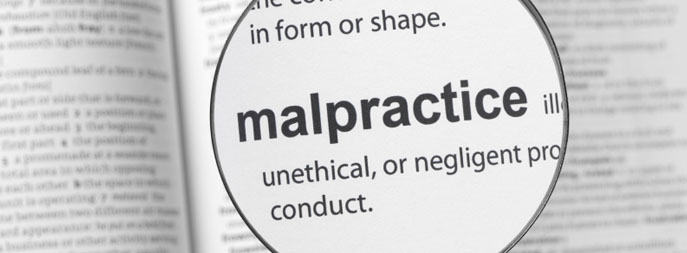
Questioning Authority
I think I have questioned authority since I started to speak; my parents, teachers, etc. But it wasn’t until I began my work with attorneys in personal injury and malpractice suits that my skepticism grew. The endless reports of malfeasance by physicians was when I started to see doctors and those in the health care industry in a different light. Am I bias in writing this? No. Skeptical of those in healthcare? Absolutely.
Starting at the doctor’s office, from the nurse checking blood pressure, to the physician ordering exams to those that perform them, to the outside labs technicians phlebotomists who draw blood, I am continuously asking questions; especially about questionable surgical procedures.
For example, a friend was due to have an outpatient surgery to remove a mole from her back shoulder. The doctor let her know that she could either have a local anesthetic or be fully anesthetized. She asked me what I’d do if it were me.
I responded that I’d opt for a local anesthetic. Why? One of my best friends is an anesthesiologist and what I learned from him are two things: Do I feel comfortable with the operating team; and 2. Other than the surgeon, the anesthesiologist is only as good as the medical device he/she is operating. He stressed that the surgery itself may be a success, but complications from the anesthesia may render you in a coma or worse dead. Why would I let fear prevail and take unnecessary risks?
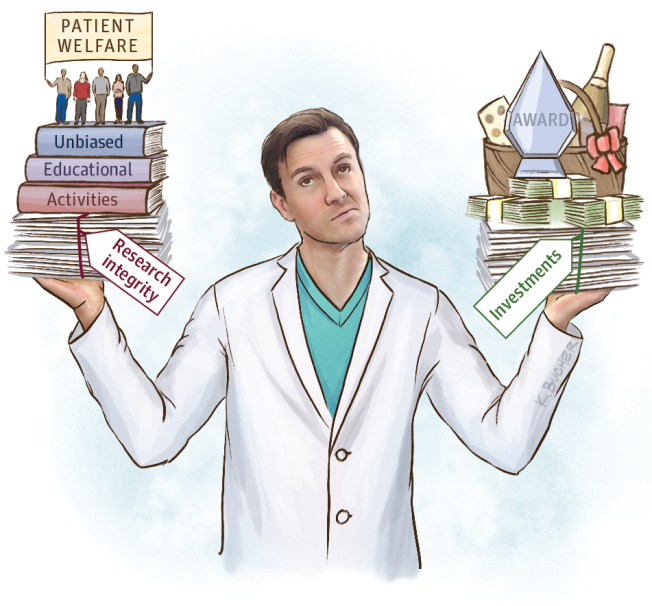
Preventive Care vs. Profitable Care?
There’s no question that there are multiple things I can do to prevent minor illnesses like colds or onset of allergies. I look to the message in the maxim: “Eat an apple on going to bed and you’ll keep the doctor from earning his bread.”
Naturally, if a gene from my “genetic blueprint” is expressed, then I will likely obtain the opinion of a medical professional. Understanding the importance of epigenetics, I will determine what particular food, product, or environment may have induced it. Knowing my family history early on, I am best suited to make informed decisions.
All in all, for myself, I arrived at the conclusion that preventive care exams have become the rule. Yet, it appears to be best suited for the exception. I think that I, above all others, should know my body best enough to make decisions that will affect it. If those decisions are centered around my rules for prevention and not the exceptions, then its tailored to my body.
Otherwise, I am setting myself up for possible unnecessary procedures that could have adverse consequences. Medical errors may be augmented by the particular region of a state one lives in or quite simply the industry sacrificing quality for quantity; replacing trained staff with less than qualified employees.
If people are becoming liabilities in themselves, then the system has produced a model of Patient = Consumer (drugs) = Customer (procedures) = $$$. This raises the question, “Are creation of preventive care programs, agencies, or organizations that reportedly work to help the public supported by the very industries they claim to combat?

Affordable Health Insurance: “A Tale of Two Cities”
As it relates to physicians, I found very telling the scene of Charles Dickens’ novel where Dr. Manette’s shoemaking workbench is broken apart, “So wicked do destruction and secrecy appear to honest minds…and almost looked, like accomplices in a horrible crime.” What I took Dickens to mean was that actions that appear to be made with bad intent may actually be well-intentioned. I imagined the dismantling of the exam table in the doctor’s cold exam room the same way their outdated black medical bag has become.
If Pharma is at the heart of what ails the majority of Americans, then is it not ideal to think like a surgeon and clear the arteries of a frail system? No. There is a codependency. People who are frail need the system and the system needs them to work. As it stands, the system is intact successfully working the way it was designed and intended to. By severing the pipeline, it all collapses. Instead, could a placebo of sorts be the panacea for a self-inflicted public?
Hospitals for some are seen as life-saving institutions and for others their final resting place. Either way, hospitals, private or public, have questionable practices that go back centuries. Reportedly, while the Americans were putting a stake on the parcel of land they claimed as their “legal” property, native Indian land, the British were digging Britain’s land for what they saw as no one’s property – cadavers.
The Resurrectionists, as they were known, became the brokers of bodies for U.K.’s hospitals and the teaching schools. Dissection goes back centuries and its questionability accounts for the practice continued attempts at secrecy especially with a reported growing global demand for illegal trafficking of organs.
Nature of the Beast: Deadly Troika?
The West is noted for their certainty of “death and taxes.” Or the coming day of reckoning through the “Four Horsemen.” By all accounts, their actions appear to gravitate towards a self-fulfilling prophecy. Other nations may have taken notice, especially those who have endured the West trampling on their land. At times, some have joined the West in their ride, while others have stood against it. In the interim, the wolfpack rides as a central unit operating as one.
I find that by turning the tables on Pharma via a “silver bullet” is a viable attempt to combat the diseased sector of the medical industry. The counterargument to my strategy of going “straight for the jugular”, the patents, may be deemed severe. Explain that to the families and friends of the countless lives that were needlessly lost due to over prescription of drugs or continue to be endangered due to financial inaccessibility to patented medications.
CDC notes “prescription opioids can be addictive and dangerous.” It’s quite clear that the Pharma industry like the Education and Prison industries is securely interwoven; pulling one thread may take down its foundation. My approach suggests a surgeon-like precision that carefully removes the cancerous thread replacing it with a healthy thriving cell-like string.
Still, cries from the industry continue; that dismantling the system is not feasible, that a bad system is better than none at all. Or, that the idea of a “resurrection” is philosophically and realistically impractical. I partly agree. I think it best to deal with it from within each sector. Though “feeding the beast” is productive for the system, bringing down the “beast” as a whole is counterproductive for all.
This is not a fight for a “David against Goliath.” We’re not looking for heroes, or for a stronger beast. Is it not best to deal with “the devil that you know” asking yourself three questions: Is the physician, pharma, or hospital a useful asset, useful Idiot or simply Idiot? Are you being given a prescription for life or death? By being admitted into a hospital, are you giving them a license to treat or mistreat? Your response may determine whether you’re dealing with a dangerous or deadly troika.
Yes, the Past was REAL!
It’s been years since that fateful day when I was rushed to the hospital. After the hospital released me, I endured weeks if not months of pain. In constant care, my mother carefully cleaned and bandaged the incision area.
Still, I have come to see that no matter how painful my experience was, it fails in comparison to what other children and their families have suffered and continue to endure, assuming they make it out alive from the operating room.
Will I ever truly know whether my appendix ruptured and the doctor saved my life OR the bastard screwed up and I was “lucky” to live through it? Probably not.
At times, I caught my parents talking in whispers saying angrily “She was butchered.” At the time, I did not understand. In time, I did. I was attacked by a wolfpack.
For the little girl, it served as a testament to world realities and a forewarning preparing her for the world of men and its treacheries. She learned early that “we are either kings or pawns” and so in time she fought and took her rightful place at the head of the table.
As an adult, I’ve concluded that although there are some reputable and competent physicians, a lot more have decidedly ignored their oath and are money hungry bastards, criminals who happen to be doctors.
Indeed, there is an inherent risk in “being under the knife” of another human being you’re to trust with your life. Medicine, a noted noble profession, has become a “double-edged sword” whose surgeon may be the angel of life, the angel of death, or a cynical merger of both.
After the cut healed, I grew up seeing the scar as a badge of honor. I’d face death and I got through it. From time to time I glance at my scar, especially when swimming, a constant reminder of the sharks outside the water. Yes, the past was real. Aye, my ship sailed past the storm.


Today, I went to the beach with my children. I found a sea shell and gave it to my 4 year old daughter and said “You can hear the ocean if you put this to your ear.” She placed the shell to her ear and screamed. There was a hermit crab inside and it pinched her ear. She never wants to go back! LoL I know this is totally off topic but I had to tell someone!